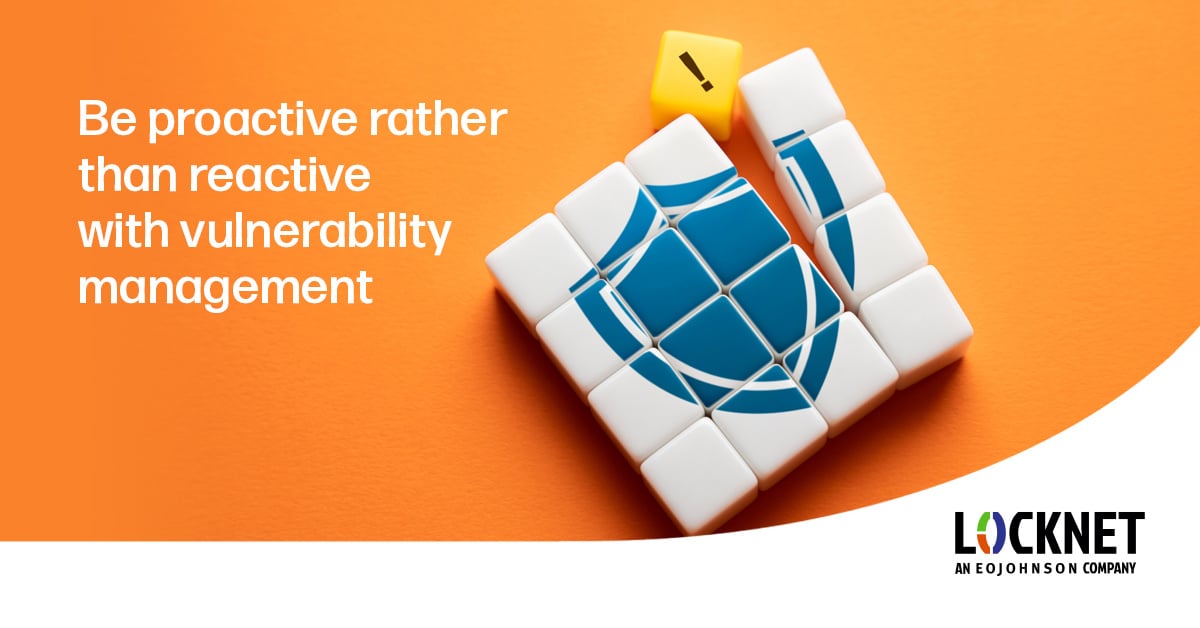Industries We Serve
World Class IT Support & Service
Real People. Right Now.
About Locknet® IT Services
From the first hello, the Locknet® team is dedicated to serving you and your needs.
Real People. Right Now.
From the first hello, the Locknet® team is dedicated to serving you and your needs.


Updated March 24, 2025.
Safeguarding your organization's sensitive information has never been more critical. Cyber threats are becoming increasingly sophisticated, exploiting vulnerabilities that may lurk within your systems and software. To stay ahead of hackers and protect your business assets, implementing a robust vulnerability management program is essential.
We’ll take a closer look at the intricacies of vulnerability management, explaining what it entails, why it is vital for your cybersecurity strategy, and how to establish an effective program to keep your network secure.
Maintaining network security requires continuous effort from your cybersecurity team. That's because new vulnerabilities emerge every day, and cybercriminals know exactly how to exploit them. So, companies need to stay one step ahead of the hackers to protect their customers and their business. That's where vulnerability management comes in.
Vulnerability management is a systematic approach to identifying, evaluating, treating, and reporting security vulnerabilities in systems and software. This crucial aspect of cybersecurity helps organizations reduce the risk of cyberattacks and protect sensitive data from being exploited.
Implementing vulnerability management in cybersecurity is essential for several reasons:
Establishing a framework for your company's IT vulnerability management is a vital investment in protecting your network. Here are the stages of vulnerability management.
Step one is to layout a formal vulnerability management policy. A well-defined policy should outline the scope, procedures, and responsibilities associated with vulnerability management. By having a formal vulnerability management program or policy in place, the entire team from system owners to stakeholders fully understands the organization’s risk posture and behavior toward vulnerabilities.
Regularly scheduled vulnerability assessments are vital for maintaining awareness of new threats. By staying proactive and conducting assessments frequently, organizations can identify and address vulnerabilities before cybercriminals exploit them.
Not all vulnerabilities carry the same risk. It’s essential to prioritize vulnerabilities based on the criticality of the systems affected, the likelihood of exploitation, and the potential impact on the organization.
After prioritization, focus on remediation efforts to address the vulnerabilities identified. This can involve applying patches, reconfiguring systems, or in some cases, implementing additional security controls.
Finally, continuous monitoring and regular reviews of the vulnerability management program are essential for its success. By evaluating the effectiveness of remediation activities and adapting the program as needed, organizations can ensure they are prepared for evolving threats. This stage is also crucial for regulatory compliance reporting, as it demonstrates the organization’s commitment to maintaining a secure environment and adhering to relevant standards and regulations.
Vulnerability management plays a pivotal role in cybersecurity and overall organizational resilience. By understanding the importance of vulnerability management and implementing a robust program, organizations can significantly decrease their exposure to cyber threats. As cybercriminals evolve and exploit new vulnerabilities, vigilance and dedication to effective vulnerability management will help safeguard your organization’s valuable assets.
When there is so much at stake, working with a trusted managed IT service can make all the difference in your company's vulnerability management success. Contact Locknet to learn more about how we support our clients with vulnerability management programs.
Managed IT

Onalaska, WI Waterloo, IA Wausau, WI Eau Claire, WI Burnsville, MN
You are now leaving locknetmanagedit.com. Please check the privacy policy of the site you are visiting.